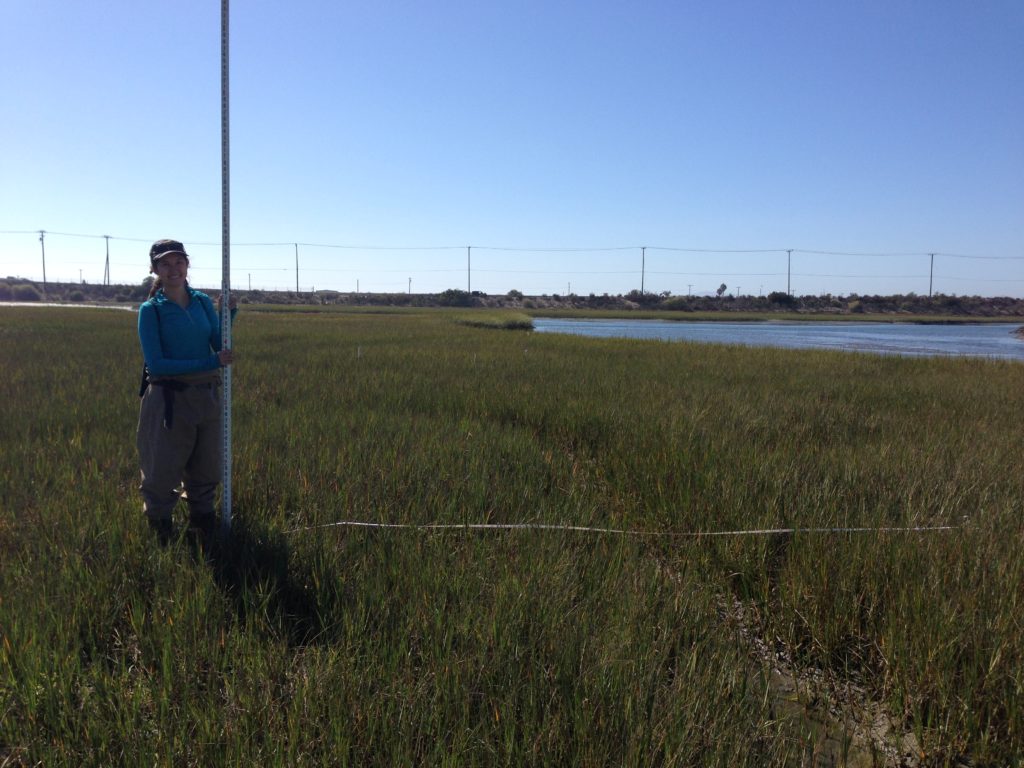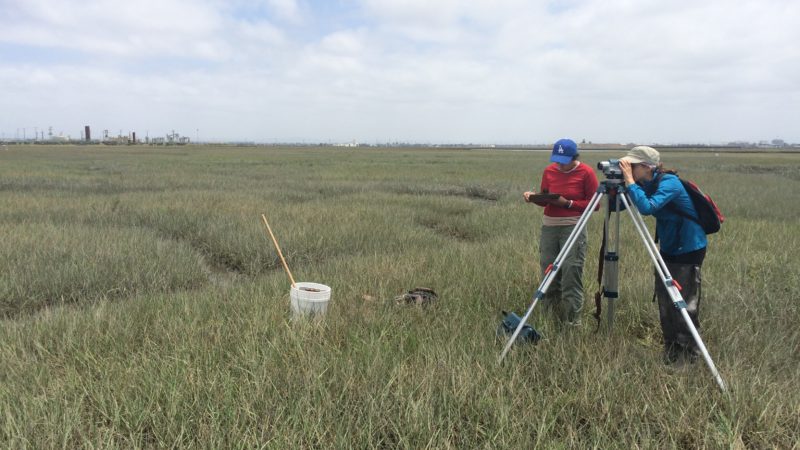Coastal wetlands are among the most vulnerable ecosystems on the planet. Pressured in many cases by human development from the land, they also now face pressures due to sea level rise from climate change. We are investigating potential solutions to this problem to understand and inform protection of the marshes and the many unique species that call them home.
Although salt marsh can generally respond to sea level rise by adjusting elevations, their capacity is limited. Current projections indicate that most salt marshes in southern California will not be able to adjust to the accelerated sea level rise predicted over the next 80 years, with much habitat predicted to convert to mudflat or subtidal habitat by 2100. Management actions for preserving salt marsh habitats are limited, but one promising technique is thin layer sediment augmentation, where sediment is added to the salt marsh plain to increase its elevation. Although thin layer sediment augmentation has been implemented in salt marshes in the eastern and Gulf Coast regions of the United States and internationally, this technique has never been tried along the west coast of the US. A pilot experiment using thin layer sediment augmentation over nearly 8 acres of salt marsh has been implemented in the Seal Beach National Wildlife Refuge—a particularly appropriate test location because oil and gas extraction at this location has resulted in 28 centimeters of subsidence, effectively replicating the sea level expected by mid-century. This increase in relative sea level has negatively impacted cordgrass (Spartina foliosa) populations, and consequently populations of the endangered light-footed Ridgway’s rail (Rallus obsoletus levipes). Sediments dredged from a nearby harbor were spread over the salt marsh using a spray nozzle. The target augmented sediment depth of 25 centimeters was generally achieved, although there were substantial differences in added sediment depth in different regions of the project area. Post-augmentation monitoring has begun and will continue for five years to document the success of this climate change adaptation technique and provide information that could be used for future applications.

Contact: Richard Ambrose, rambrose@ucla.edu



